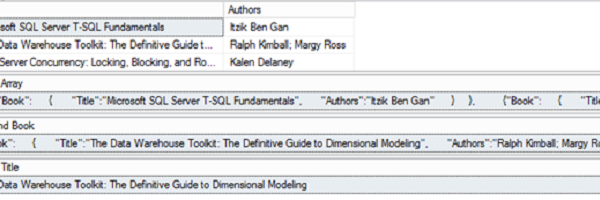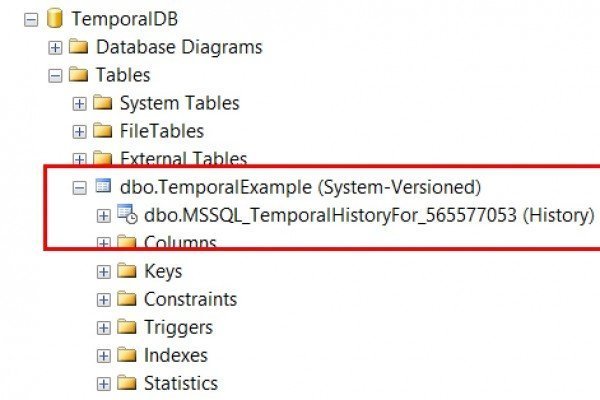As an independent database consultant, I often face a challenge when analyzing the performance of SQL Server instances, which I see for the first time in my life. In many cases, this may seem a difficult task, because in order to fix something you must first understand the database structure. A great many of the companies do not document their database. And even if documentation exists, it is rarely updated. As a result, we have the following situation – documentation is either obsolete, or does not reflect the actual state of things. Let understand SQL SERVER – View Dependencies.
SQL SERVER – ShowPlan XML Additions for ColumnStore Indexes
The last time when I wrote about ColumnsStore FAQ, one of the readers had an interesting question. The question was around how to identify the traits of using a column store inside an execution plan. The very thought got me thinking. I was thinking where to start. I remembered that ShowPlan XML was a great way to see some of these attributes. The very next question that came up, what should one look forward to inside a ShowPlan XML.
Interview Question of the Week #058 – What is the Difference Among DECIMAL, FLOAT and NUMERIC Datatype?
Question: What is the Difference Among DECIMAL, FLOAT and NUMERIC Datatype? Let us learn more.
SQL SERVER – JSON Support for Transmitting Data for SQL Server 2016 – Notes from the Field #114
[Note from Pinal]: In this episode of the Notes from the Field series database expert Kathi Kellenberger explains about JSON Support for Transmitting Data for SQL Server 2016. Kathi is an amazing instructor, she was the SQL author I have read in my early career. The reason, I love SQL Server because her writing has instigated love for this technology in me. Today she brings a relatively interesting topic for database experts. Read the experience of SQL SERVER – JSON from Kathi in her own words.
SQL SERVER 2016: Creating Simple Temporal Table
Temporal tables are a new feature that was introduced in SQL Server 2016. A temporal table gives application developers to view the state of data at a point in time. Temporal tables can also be used for logging purposes if required. I wanted to explore how this feature can be used. The documentation has been interesting and I went ahead in trying out how this can be enabled.
One of the most used use case for this feature would be to find the data values in a past date. This can now be easily configured in SQL Server 2016. Let us go ahead and create a database for use and then create a table with the Temporal history database created by default / automatically.
SQL Server Auditing and Recovery With ApexSQL Log 2016
ApexSQL Log is a powerful SQL Server transaction reader for forensic auditing and rollback of malicious and/or unintended changes for Microsoft SQL Server. It is an ideal cost solution for recovery, row changes and/or before-after auditing. ApexSQL Log uses technology which enables it to read online transaction log files or transaction log backup files in order to create auditing results including before and after views of the data as well as the full row history of all changes.
From the recovery standpoint, ApexSQL Log provides sophisticated undo/redo capabilities which enable it to create TSQL scripts which can be used to completely reverse or replay all or only selected transactions read from the online transaction log file and added transaction log backups.
SQL SERVER – How to Connect Using NT AUTHORITY \ SYSTEM Account?
Sometimes it is needed to connect to SQL Server using System account. Don’t literally ask me if this is a valid scenario in first place. Someone just pinged to say – they want to do it. I was personally not sure why, but they had their own internal requirement to do the same. Let us learn about in this blog post about how to connect using NT AUTHORITY \ SYSTEM Account?
It is not possible to provide windows credential in SSMS and they are always grayed out. My exploration is always to keep trying to find a solution to such typical use cases. I was able to find that PSExec can be used to achieve this. I am a big fan of some of the tools from sysinternals. These are handy and quite small footprint of the servers. One of the tools I have day-in day-out is ZoomIt while doing presentations.
Interview Question of the Week #057 – What is GO Statement in SQL SERVER?
GO is not a Transact-SQL statement; it is often used in T-SQL code. Go causes all statements from the beginning of the script or the last GO statement (whichever is closer) to be compiled into one execution plan and sent to the server independent of any other batches. SQL Server utilities interpret GO as a signal that they should send the current batch of Transact-SQL statements to an instance of SQL Server. The current batch of statements is composed of all statements entered since the last GO, or since the start of the ad hoc session or script if this is the first GO.










